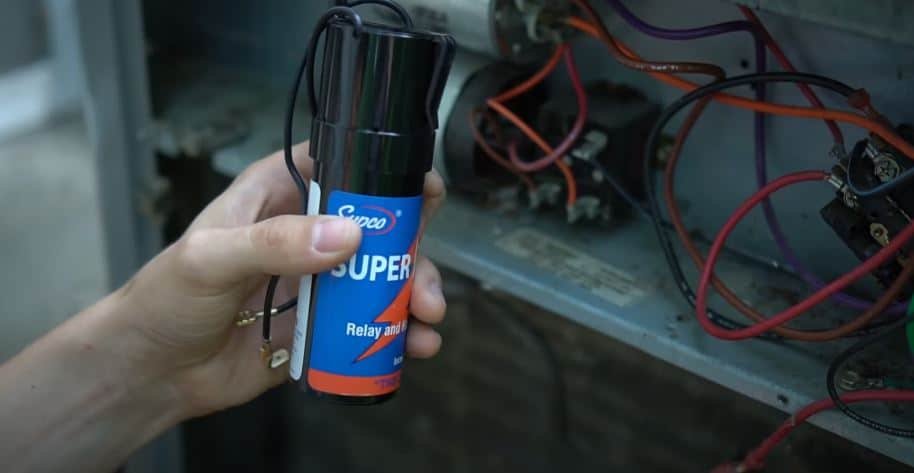
What is a Hard Start Kit?
A hard start kit is a capacitor that helps your ac to kick start when it struggling to turn on. It's almost like a boost for the compressor at startup.
Because for any electrical motor or compressor the most straining thing is starting. So what this hard start kit does for the compressor on an AC is give it a boost and that compressor actually starts up like 10 times faster than it normally would.
Why You Should Install In A Hard Start Kit:
- If you have an Old Air Conditioner System
- If you have a fluctuating Voltage
- Compressor Locked Up and Won’t Start
- If you have multiple ac units.
- If your AC is Tripping Breaker
- If you have a home generator
How To Install A 2 Wire Hard Start Kit?
Step 1: Turn Your Condenser Power Switch OFF

The first thing you need to do is turn your disconnect switch off. Because you’ll be operating the condenser unit and if you don’t disconnect the power you’ll end up getting electrocuted. So it’s best to disconnect the power and then operate.
Step 2: Remove Your condenser Unit Side Panel For Accessing the Electrical Items

Now you need to remove the side panel of the condenser unit to access the capacitor. You can remove the side panel with the help of a screwdriver.
Step 3: Take the capacitor Out And Discharge It

Now you need to remove the capacitor from the metal strap. You can remove the capacitor with the help of a screwdriver. Make sure you’re not touching the capacitor’s tine/terminal.
Because the capacitor still contains charge inside it. So you need to discharge it first. After taking the capacitor out. First, touch the screwdriver from common to herm and then from common to fan. And you’re capacitor is discharged and safe to touch.
Step 4: Install The Hard Start Kit

Now you need to install the hard start kit on the capacitor. Just to clarify this the hard start is only for the compressor it is not for the fan. Fans do not need hard start kits unless your fan is some gigantic commercial thing.
So now you need to install the hard start kit on the capacitor. So your hard start kit will have two wires on it. One wire will go to the HERM terminal of the capacitor and the other will go to the common.
And you have successfully installed the hard start kit on your ac unit. You can either screw your kit into the condenser unit or it’ll have a clip that you can hook to wires.
How To Install A 3 Wires 521 Hard Start Kit?
Step1: Turn Your Condenser Unit Power OFF
You should always disconnect the condenser power switch before operating in the condenser unit.
Step 2: Locate and Discharge Your capacitor
Now you need to locate your capacitor and discharge it. After you find out where your capacitor is. Just touch the screwdriver from common to herm and then from common to the fan. And you’re capacitor is discharged and safe to touch.
Step 3: Install the 521 Hard Start Kit
Now you need to install the hard start kit to your condenser unit.
So the first thing you need to do is to connect the section 5 wire to the common section/terminal of the contactor. It’ll usually be the black wire.
The section 2 wire will go to the HERM terminal of the capacitor. It’ll usually be the yellow wire.
Lastly, the section 1 wire will go to the Common terminal of the capacitor. It’ll usually be the red wire.
Now you have successfully installed the 521 hard start kit on your ac unit.
Choose Between 2 wire Hard Start Kit Vs 3 Wires 521 Hard Start Kit
So which one is better the 2-wire hard start kit or the 3-wire hard start kit with the separate potential relay.
And the answer is the 3-wire hard start kit is better it functions better it's better quality and it doesn't have that cool off time like the 2-wire kit. But the thing is 3-wire kits cost two or three times more than the two-wire hard start kits.
521 Hard start kits are mostly used for the hottest region and if you live in a normal climate region then you’ll be good with the 2 wire hard start kit.
Click Here To Check Our AC Repair Tutorial: Most reported problems by homeowners and their DIY Solution.
